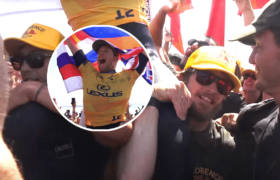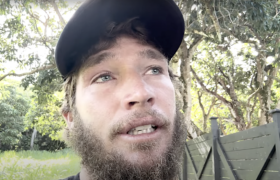Holy Toledo.
“Dejected” is the word to describe Finals Day at Bells Beach.
It might describe the fans, or Ethan Ewing, or Jack Robinson, or the waves we were left with.
A problem exists when an event window produces quality waves but the grand finale is held in conditions where the average surfer might shrug her shoulders and get in or not. I make it three events in a row. That’s a damning indictment on both the current format and the decisions of Jesse Miley-Dyer, who is surely is not long for this world.
The solutions? Overlapping heats as standard for the rounds of 32 and 16, better calls by the Commissioner, and – dare I say it – the looming cut.
Not dejected today was Filipe Toledo, who eventually rang the bell and surely knows that in the absence of Gabriel Medina and Italo Ferreira, he has no real competition in anything but heavy reef breaks.
At the conclusion of a disappointing final which seemed both dull and inevitable at the outset, Richie Lovett asserted that “history tells us that the Bells champion often goes on to win the world title.” I haven’t checked his claim, but you’d be bold to bet against it at this stage.
Toledo now holds the lead in the overall rating. Given the events left on the calendar, he could probably elect to sit out of Teahupo’o if the forecast is over 4ft and still hold a commanding lead going into Trestles.
Once again, with no Gabriel Medina (unless he was a wildcard), a boiling-over Italo (more on him in another post) and the shadow version of JJF who emerges in sub-par waves, who’s fit to compete with Toledo at Trestles?
Kanoa?
We saw some of the best and most entertaining Bells Beach ever in the mid-rounds, the juxtaposition of which made Finals Day even more egregiously awful.
But let’s forget about that for a moment and focus on what will be remembered from Bells Beach in 2022.
The production as a whole was slicker, the commentary more competent.
As you know, I like to extricate and examine the various wrinkles that exist in the broadcast and production of WSL events, sometimes with tongue-in-cheek, and sometimes with great vengeance and furious anger.
But this time I was left wanting. On the whole, I would have to say I was impressed?
As mentioned before, moving Kaipo to the water (essentially stashing him in the back of the wardrobe) was a masterstroke. Ronnie was dependable as ever, Joe was Joe, Richie and Rabbit were both good, as was Laura. And if I’m to look beyond the tone of Shannon’s voice I’d have to say I don’t hate her.
Interviewing the losers is a welcome addition and a suggestion many of us have made online for a long time. Better pre and post heat camera work was also evident, allowing us to gauge reactions and moods, and therefore develop character and context.
Fewer waves were missed during heats, though we were still left staring at “Stay Tuned” screens occasionally. The old boys phone-in club is harmless enough, but I can’t say it adds much, especially for potential new audiences.
I think we might reasonably assume that much of this improvement is due to guidance from Box to Box films, or perhaps just observation of what they’re doing.
We were also provided with a shimmer of intrigue and a sniff of rebellion with talk of a strike in protest of the mid-season cut, but the restless natives were quickly slapped back in chains by Erik Logan. More surprising, I’m fully with ELo on this one. Both in terms of the decision to have the cut and the manner in which he re-stamped the intention.
Sit down and shut up was the correct response. Professional surfing is for entertainment, it owes no-one a living.
Will Logan’s iron fisting be decisive and final? I would guess so.
But what it has done is elicited some passion from the surfers and the fans. It is a talking point, and talking points are what sport needs. “The only thing worse than being talked about is not being talked about” goes the old adage.
It also makes me think of the advice I give when teaching creative writing to school pupils: create characters your reader can care about. They might manifest in a variety of ways: it could be characters we love or root for; but equally ones we might loathe or despise. Villains are just as effective as heroes. And always remember: the last thing you want is characters no-one gives a shit about, characters where the reader’s only response can be pure, unadulterated apathy.
The latter is largely what we have been given by the WSL for years now. Sugar-coated nothingness. That’s changing. Perhaps it has taken an outside perspective to make those changes, a Hollywood perspective. Perhaps it has taken some non-endemic media influence to teach us how our sport should be presented.
Maybe the change makes you uncomfortable. Surfing won’t feel like yours anymore. But change is nearly always hard to some degree. When it’s virtually metamorphosis, it’s bound to hurt.
Maybe Erik Logan is not the villain we want, but the villain we need.









